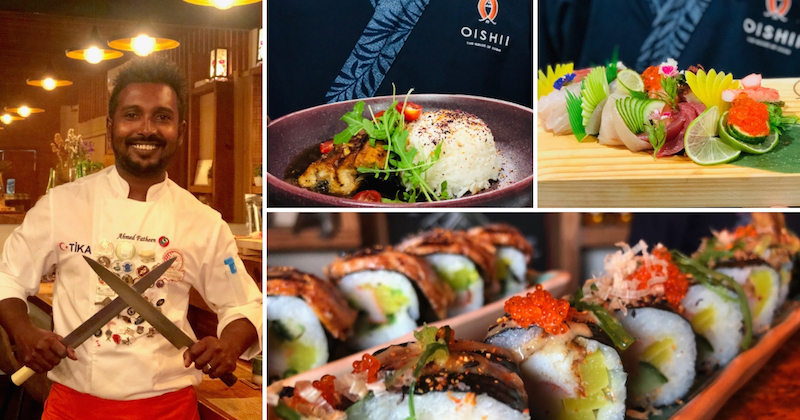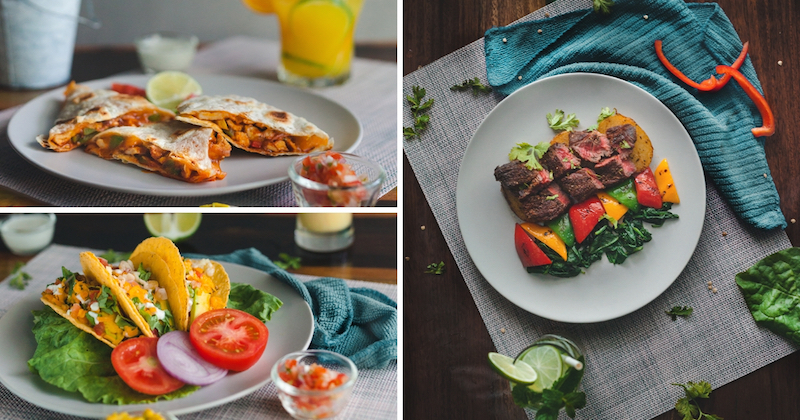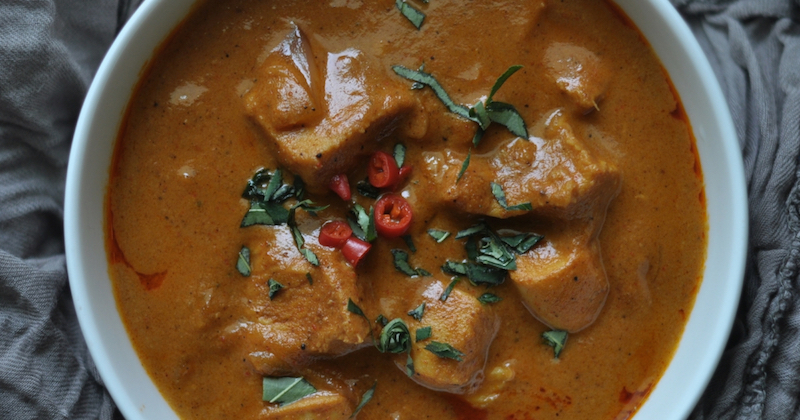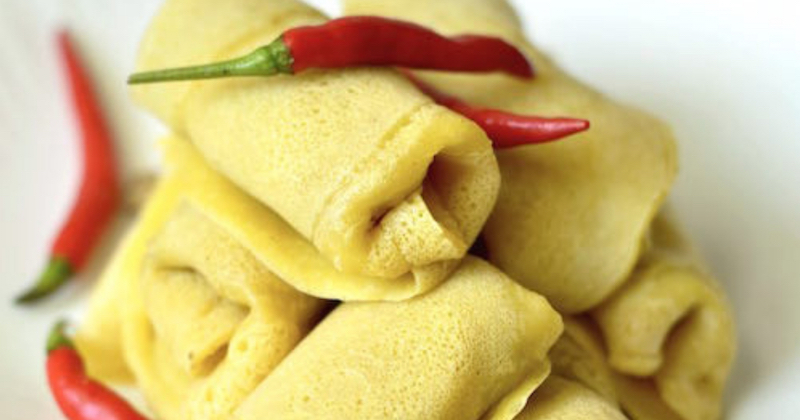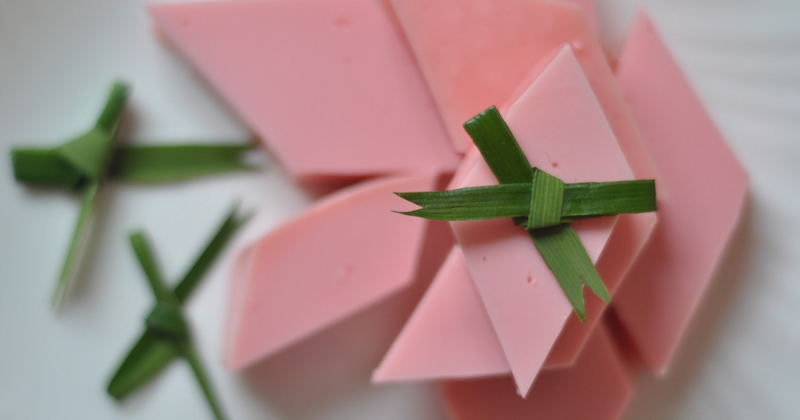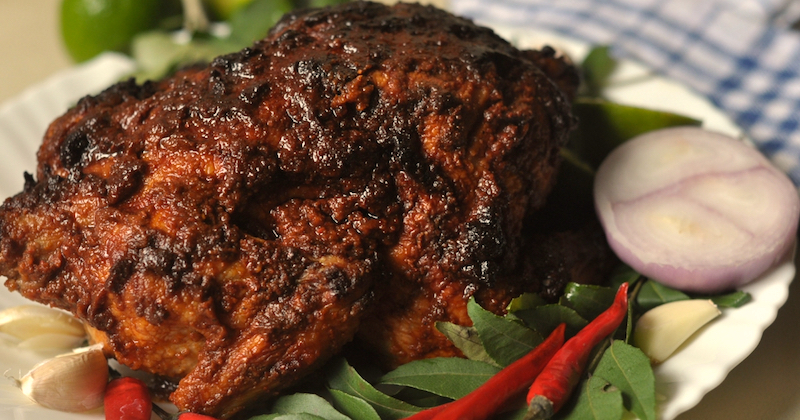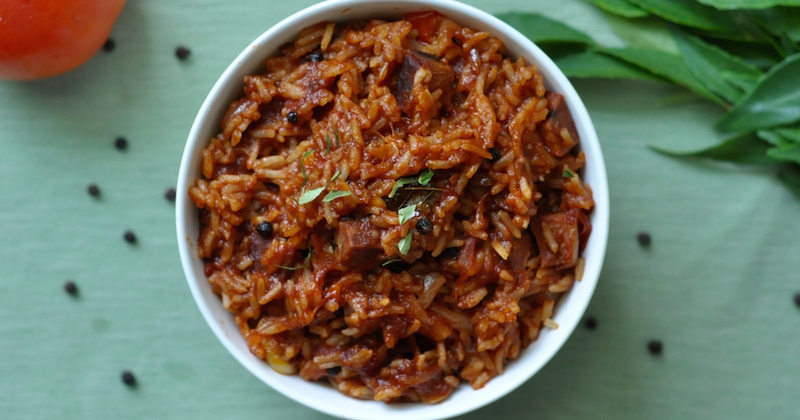Dhiyaa Hakuru – The Maldivian Coconut Honey

by Iyath Adam
Dhiyaa hakuru is the traditional Maldivian sugar, made from coconut sap. The closest English name would be coconut honey or coconut nectar, although neither is quite right.
The process of making dhiyaa hakuru begins with the raiveriyaa or toddy tapper, who draws the sap from the coconut palm. The stem is trimmed to let the sap leak out. Once enough sap is collected, it is boiled until it reduces down, caramelises and turns viscous. The resulting paste is a thick, butterscotch-coloured liquid, which kind of looks like liquid gold! The taste is sweet and coconutty – a quintessential Maldivian flavour.
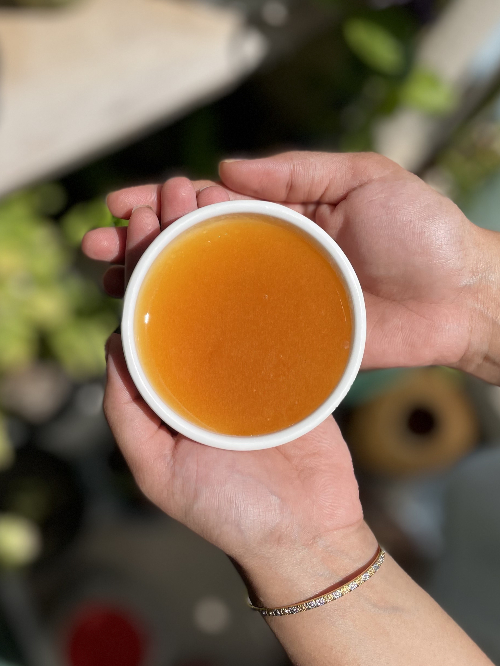
One interesting part of the process is the coral rocks from the beaches being added to the pan while the sap is boiled. These rocks are replaced throughout the process and are used to prevent the sugar from foaming up and burning.
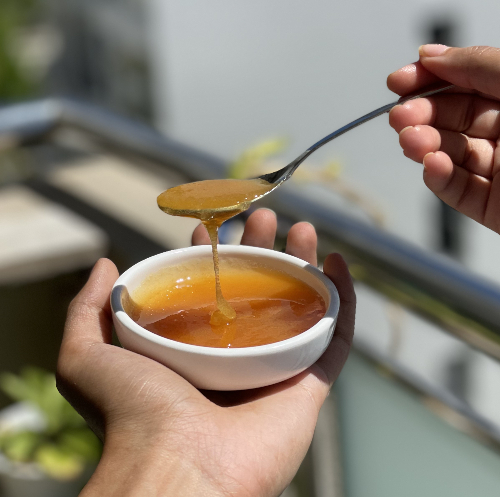
This dhiyaa hakuru can be further boiled down to make karu hakuru, a more viscous, grainier paste. The colour of this can range from white to pale gold, depending on the island and maker. Karu hakuru is often eaten mixed with gabulhi (young coconut flesh) or even on its own with roshi (Maldivian flatbread).
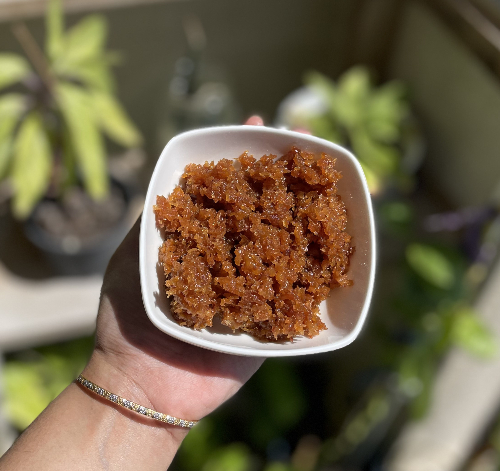
Dhiyaa hakuru is best eaten with huni roshi (coconut flatbread). It is also added to traditional Maldivian desserts such as huni hakuru (a Maldivian pastry made with young coconut), bondi (a cylinder-shaped, sweet Maldivian snack) and even bondibaiy (Maldivian rice pudding).
About Lonumedhu
Lonumedhu is about eating great food right here in the Maldives.
Our easy to follow recipes use locally available ingredients.
In our blog you will find food news, interviews with chefs and cooks, useful information about eating out and other foodie reads.
Contacts
© Lonumedhu.com 2017-2025. All rights reserved. No part of this website may be reproduced without the written permission of the publisher.
Advertisers
Lonumedhu.com has partnered with Qualia Pvt Ltd, a publishing & marketing agency, for its desktop and mobile advertising.
Advertising enquiries should be directed to (960) 987 4396 or marketing.sales@lonumedhu.com.

